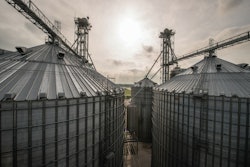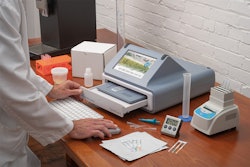
The dog days of summer may be over and harvest is right around the corner, but in many parts of the country, temperatures are still hot. For workers in grain, feed and allied processing industries, being able to identify the signs and symptoms of heat-related injuries is critical.
In April, the U.S. Department of Labor’sOccupational Safety and Health Administrationlaunched aNational Emphasis Programto protect millions of workers from heat illness and injuries. Through this program, OSHA will conduct heat-related workplace inspections before workers suffer completely preventable injuries, illnesses or worse, fatalities.
As part of theprogram, OSHA will proactively initiate pre-planned inspections in over 70 high-risk industries in indoor and outdoor work settings when the National Weather Service has issued a heat warning or advisory for a local area. The list includes certain farming and agricultural businesses.
To stay a step ahead, be sure to train your workers in identifying heat-related illnesses in themselves and their fellow workers and establish a heat illness prevention program.
Employers should evaluate conditions at their worksites and take steps to prevent heat-related illness among their workers. In particular, employers should keep in mind that employees who are required to engage in intense or continuous physical exertion, or who are exposed to high temperatures and humidity or direct sunlight, may be susceptible to heat-related illness.
Heat stress in the workplace
There are a range of heat illnesses that can affect anyone, regardless of age or physical condition. Heat stress occurs when the body cannot get rid of excess heat. When this happens, the body’s core temperature rises and the heart rate increases.
As the body continues to store heat, the person begins to lose concentration and has difficulty focusing on a task, may become irritable or sick and often loses the desire to drink. The next stage is fainting and even death if the person is not cooled down.
Signs of heat illness
Under OSHA law, employers must protect workers from known safety hazards, which includes extreme heat. If your facility doesn’t have one already, you should craft a heat illness prevention program and train your workers in staying safe in the heat.
- Provide workers with water, rest and shade.
- Allow new or returning workers to gradually increase workloads and take more frequent breaks as they build a tolerance for working in the heat.
- 制定应急计划和培训工人prevention.
- Monitor workers for signs of illness. Symptoms of heat illness include confusion, fainting, seizures, excessing sweating and dizziness.
- If you notice an employee showing signs of heat-related illness, have them sit or lie down in a cool, shady area. Provide water to drink and cool the worker with cold compressed ice packs. If signs or symptoms worsen or do not improve, seek medical help by calling 911.
- To help prevent heat-related illnesses, schedule appropriate work/rest cycles throughout the day.
- When possible, strenuous work should be scheduled to avoid the peak heat of the day.
- Rotate job functions among workers and have employees work in a buddy system to watch out for each other.
NGFA Harvest safety week focuses on the heat
TheNational Grain and Feed Association’s annual Harvest Safety Week, being held August 22-26, will have a special emphasis on heat-related illnesses and how they impact grain processing employees. Additional safety resources and heat illness prevention tips can be found by visitingngfa.org/safety. Be sure to follow #HarvestSafetyWeek for more information.
Heat-related illness resources
Here are a few additional resources on heat-related illnesses and how to prevent them in your feed and grain facilities:






















